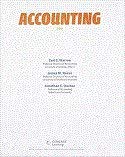
Concept explainers
Identifying product cost distortion
Peachtree Beverage Company manufactures soft drinks. Information about two products is as follows:
It is known that both products have the same direct materials and direct labor costs per Case. Peachtree Beverage allocates factory
Jamaican Punch: Requires extensive process preparation and sterilization prior to processing. The ingredients are from Jamaica, requiring complex import controls. The formulation is complex, and it is thus difficult to maintain quality. Finally, the product is produced in small production run sizes.
King Kola: Requires minor process preparation and sterilization prior to processing. The ingredients are acquired locally. The formulation is simple, and it is easy to maintain quality. Finally, the product Ls produced in large production run sizes.
Explain the weakness in the per-case product profitability report in light of the additional data.
Want to see the full answer?
Check out a sample textbook solution
Chapter 25 Solutions
Custom Bundle: Accounting, Loose-leaf Version, 26th + Working Papers, Chapters 1-17, 26th Edition
- Please explain the solution to this financial accounting problem with accurate explanations.arrow_forwardPlease explain the correct approach for solving this general accounting question.arrow_forwardI am searching for the correct answer to this financial accounting problem with proper accounting rules.arrow_forward
- Can you help me solve this financial accounting question using valid financial accounting techniques?arrow_forwardPlease provide the solution to this financial accounting question using proper accounting principles.arrow_forwardCan you provide the valid approach to solving this financial accounting question with suitable standards?arrow_forward
- Please provide the accurate answer to this financial accounting problem using appropriate methods.arrow_forwardI need help finding the accurate solution to this financial accounting problem with valid methods.arrow_forwardPlease explain the accurate process for solving this financial accounting question with proper principles.arrow_forward
 Managerial AccountingAccountingISBN:9781337912020Author:Carl Warren, Ph.d. Cma William B. TaylerPublisher:South-Western College Pub
Managerial AccountingAccountingISBN:9781337912020Author:Carl Warren, Ph.d. Cma William B. TaylerPublisher:South-Western College Pub Financial And Managerial AccountingAccountingISBN:9781337902663Author:WARREN, Carl S.Publisher:Cengage Learning,
Financial And Managerial AccountingAccountingISBN:9781337902663Author:WARREN, Carl S.Publisher:Cengage Learning, Cornerstones of Cost Management (Cornerstones Ser...AccountingISBN:9781305970663Author:Don R. Hansen, Maryanne M. MowenPublisher:Cengage Learning
Cornerstones of Cost Management (Cornerstones Ser...AccountingISBN:9781305970663Author:Don R. Hansen, Maryanne M. MowenPublisher:Cengage Learning Managerial Accounting: The Cornerstone of Busines...AccountingISBN:9781337115773Author:Maryanne M. Mowen, Don R. Hansen, Dan L. HeitgerPublisher:Cengage Learning
Managerial Accounting: The Cornerstone of Busines...AccountingISBN:9781337115773Author:Maryanne M. Mowen, Don R. Hansen, Dan L. HeitgerPublisher:Cengage Learning



